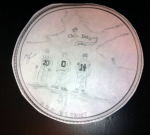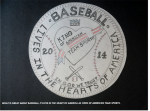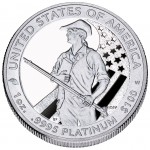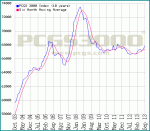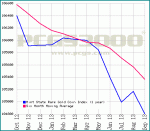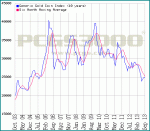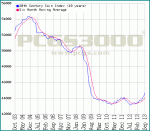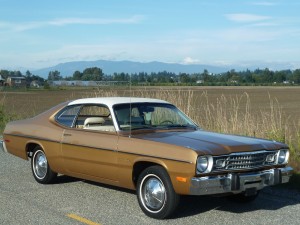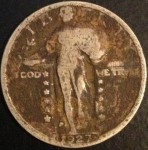2022 Commemorative Coin Programs Pass the Senate
Two commemorative coin bills introduced and passed in the House of Representatives were passed by the Senate this week. Both bills will create commemorative coin programs for 2022.
H.R. 1830: National Purple Heart Hall of Honor Commemorative Coin Act
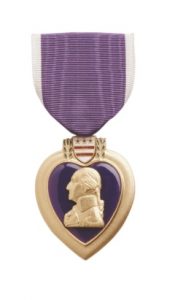
Purple Heart Medal (image courtesy of Stars and Stripes)
It would have been interesting to require this coin to be in the shape of a heart. The obverse design could be similar to that of the Purple Heart medal. The reverse could be about the Hall of Honor or the sacrifice made by those awarded the Purple Heart.
I will likely purchase this commemorative coin in honor of my grandfather, a recipient of the Purple Heart for injuries sustained in Europe during World War I.
H. R. 4104: Negro Leagues Baseball Centennial Commemorative Coin Act
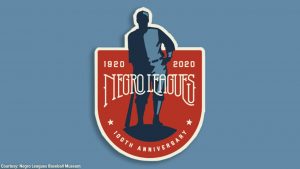
(From Twitter)
Although the law will not require these coins to be curved, there is an opportunity for judicious use of color and selective highlights, such as those used for the enhanced strikes.
Both bills will become law when signed by the president.
Now that Congress has begun its Lame Duck session stay tuned for more numismatic bills to pass by unanimous consent.
Kids can do the best work
Last week, the U.S. Mint announced the winners of the Kid’s Baseball Coin Design Challenge from their website and on YouTube. The announcement was made by U.S. Treasurer Rosie Rios, who has been the most active Treasurer with the collector community.
Since children 13 and under were not allowed to compete for the National Baseball Hall of Fame commemorative coin, a program was set up to allow youngsters to participate. Here is the announcement video from Treasurer Rios:
Frankly, forgetting the fact that these are children and their drawing is not refined, some of these kids had better concepts for coins than some of the adults. Considering the winner of the adult contest was a college student (or a recent graduate) maybe younger designers are the future of coin design. Judge for yourself, here are the three winners of each age group:
- Winner of the 5 and under age group
- Winner of the 6 to 10 age group
- Winner of the 11 to 13 age group
I wonder if the winners could be introduced to Heidi Wastweet, medal artist who is also a member of the Citizens Coinage Advisory Committee. I visit her website to admire Wastweet’s work and wonder why she’s on the CCAC and not designing coins and medals for the U.S. Mint. Can you imagine if any of these kids can get lessons from Wastweet? We would be looking at great future for coin design if this could happen.
One can only dream.
Summary of October coin-related legislation
Believe it or not, there was a little business actually being done by the congress other than the partisan bickering.
H.R. 3305 Currency Optimization, Innovation, and National Savings Act
Track this bill at http://www.govtrack.us/congress/bills/113/hr3305
CCAC to the U.S. Mint: You can do better
The buzz around the numismatics industry is the article that appeared on the front page of Coin World saying that the Citizens Coinage Advisory Committee rejected the U.S. Mint proposal to use classic coin designs as the basis for a new series of American Eagle Platinum Proof coins.
According to the article, CCAC Chairman Gary Marks commented, “My message is, ‘Let’s do something modern, something new.’”
Since 2009, the reverse of the American Eagle platinum proof coins featured the six principles outlined in the preamble of theUnited States Constitution: “To Form a More Perfect Union,” “To Establish Justice,” “To Insure Domestic Tranquility,” “To Provide for the Common Defence,” “To Promote the General Welfare,” and “To Secure the Blessings of Liberty to Ourselves and our Posterity” which will be released in 2014 to end the program. The U.S. Mint is looking for their next program.Unlike other coin programs, the law governing the platinum bullion coins (31 U.S.C. §5112(k)) allows “The Secretary [to] mint and issue platinum bullion coins and proof platinum coins in accordance with such specifications, designs, varieties, quantities, denominations, and inscriptions as the Secretary, in the Secretary’s discretion, may prescribe from time to time.”
Now, The Secretary’s proxy, the management at the U.S. Mint, is proposing a series based on classical coins designs. Using charts showing declining coin sales, they claim that a study shows that “classic Eagle” and “classic coin” designs are popular amongst their customer.
The U.S. Mint may be reading too much into their studies.
First, any sales studies over the last four years have to be taken with a heavy dash of salt. As much as the economy affects their circulating coin programs it also affects the collector coin programs. Since coin collecting is not a necessity, expecting sales to do anything but decline during an economic downturn is naive.
The other problem with coin sales are the coins programs themselves. Rather than give the quarters programs a rest and come up with something different, congress, who decides what the U.S. Mint can do, passed the America’s Beautiful National Parks Quarter Dollar Coin Act of 2008 (Public Law 110-456) to overload our senses with yet another 10-year program. It was justified by noting the seigniorage of the 50 States Quarters program.
This leads to the crux of the problem: the tail wagging this dog are marketeers and bureaucrats rather than collectors and those concerned with how American coinage represents this country.
Many of the classic designs are those that came from what author Roger Burdette calls the Renaissance of American Coinage. These are the iconic designs that came as a result of President Theodore Roosevelt’s “pet crime,” where Roosevelt decided to create modern (early 20th century) classic designs to best represent the United States.A lot of people love the classic designs but on the classic coins. There comes a time to move forward and come up with something different and fresh. Although I have not agreed with some of the CCAC’s decisions, I agree with this decision.
When asked if there should be a theme to the design, CCAC member and medal sculptor Wendy Wastweet said, “No. The artists would be delighted to be free.”
Why not let the U.S. Mint artists have free reign to come up with new designs? They have proven that when allowed to use their talents they can create some of the best designs in the world.
The CCAC has been consistent in tell the U.S. Mint to get out of the way of the artists. In fact, the CCAC Blueprint Report released in February 2011 recommended better working conditions for the U.S. Mint’s artists and engravers while giving them a freer hand in using their talents for new coin designs.
In more than two years, the U.S. Mint has not changed allowing their marketing bureaucracy misread statistics in an attempt to fix a problem they continually demonstrate they have no understanding or insight. The CCAC is right to tell the U.S. Mint to come up with something better. In the process, if the marketing department would stand aside and let the artists be creative, I am reasonably certain these talented individuals will create something far more interesting than any marketeer, bureaucrat, or any member of congress.
Can you really invest in coins?
I always welcome email from readers and the curious but I received an email with an interesting question. My correspondent had become interested coin collecting as an investment and wanted to know if I knew where to find out how much the gold coins would be worth in 10 or 20 years. Channeling my inner Edward Moore (from his play The Gamester) or Dr. McCoy for the Star Trek fans, I replied “If anyone knew the answer to that question they would rich beyond the dreams of avarice!”
This is not the first time someone asked me what I thought would be the price of rare or gold coins in the future. It is also a question that I do not like to answer since I am a collector and not an investor.
Markets are difficult to predict. Even the experts get it wrong. For example, a simple Internet search will find articles that appeared in MarketWatch, Reuters, and The Guardian from the United Kingdom predicting $2000 per ounce prices for gold. In March, the financial site The Motley Fool had an article saying that gold could hit $2000 per ounce next year.
In reality, gold opened the year at 1670.95, the high for 2013 and is 1309.64 as of Friday’s (October 25) close. Even with a small spike in August, the trend is going down. But does the trend mean that gold will still go down?
Trying to read the financial tea leaves has long been a sport for the financial pundits. One pundit writing for Forbes noted that the dollar strengthened while gold and crude oil dropped while last week, another pundit from Bloomberg wrote that stocks and gold rose as the dollar falls on the reaction earnings that have been topping estimates and the prediction of slower economic growth predicted by the Federal Reserve saying it will maintain its stimulus program. In between, an analyst at Yahoo Finance was predicting “a major turnaround in the US Dollar versus the Euro, but gold prices may actually outperform versus the Greenback.”
Predicting the price of gold and rare coins can be a similar test of ones nerves. One interesting way to look at the market is to see what the PCGS3000 Index says. The PCGS3000 index uses a sampling of collector coins, type coins, varieties, and differing grades to create a market index. Their sample are considered classic coins (1792-1964) including gold and early commemoratives to total 3000 coins.
This recent history of collector coins shows an upward trend over the last year as the economy has improved (see graph below on the left). However, looking over the last 10 years (graph below on the right) the peak occurred before the economy turned sour at the end of 2008 and has largely remained flat since falling to a low in 2010.
- PCGS3000 one year graph showing an upward trend
- PCGS3000 ten year chart showing the unpredictability of the coin market
Does this mean gold and rare coins are not a good investment? If you bough during the run up in value in 2008, you are behind. However, coins purchased from the beginning of the ten-year chart should yield a better return for investors.
Those thinking that gold coins may be a better investment might want to consider that the price of their coins will be tied to the price of gold. Both the PCGS Generic Gold Coin Index (below on the left) and the PCGS Mint State Rare Gold Coin Index (below on the right) almost mirrors the gold market over the last year. In fact, looking at the 10 year history the Mint State Rare Gold Coin Index almost mirrors the PCGS3000 Index while the Generic Gold Coin Index is all over the place and does not even follow the price of gold for the last 10 years.
- PCGS Generic Coin Index for the past year
- PCGS Mint State Rare Gold coins showing a downward trend
- PCGS Generic Gold Index for the last 10 years shows almost no trend
- PCGS Mint State Rare Gold Index seems to mirror the PCGS3000 index.
While you are thinking that this may be particular to gold coins, investors in 20th Century Coins (see chart below on the left) and Morgan and Peace Dollars (below, right) may be scratching their heads looking for a better return.
- PCGS Morgan and Peace Dollar Index for the last 10 years
- PCGS 20th Century Coin Index may indicate that coins from our recent past may not be a good investment.
As a layman, what appears to be a hot market is the very high end market. These are the extremely rare coins, coins with extraordinary pedigrees, and unique collectibles. Not every collector or investor is going to be able to own a 1794 Flowing Hair dollar that sold for $10 million last January, the George Walton 1913 Liberty Head Nickel, or a 1880 Coiled Hair Stella which is really a pattern that sold for $2.5 million in September. Even rare copper coins are selling at a premium.
The mantra of investing is to buy low and sell high. The problem is knowing what to buy. By the time someone figures out what is the best investment, the prices are going up and the investor value is lost. Along with knowing the coins and their value, timing is everything. For example, is now the time to look at what are sometimes called exotic U.S. coins? Exotic coins are those produced before the 1870s like the Bust and Liberty Seated coins, Trade dollar, and even the rare two- and three-cent coins. Many of these coins are overlooked by a lot of people, including collectors, sometimes because of cost other times because they are not as readily available.Predicting the coin market is more difficult than stocks and commodities. With the capital markets there is company performance data, yield of crops, world conditions, and a lot of measurable factors that the professionals use. None of that exists in the coin investing market. Prices can be predicted by rarity to a certain degree, much of the pricing appears to be based on emotion: what will you pay for the coin. For instance, if the 1794 Flowing Hair dollar sold for $10 million what would the only legal-to-own 1933 Saint Gaudens Double Eagle sell for today? It used to hold the record for the most ever paid for a single coin when it sold at auction for $7,590,020 (including buyers premium and the $20 that was required to monetize the coin) in 2002.
In case you were interested, according to the Bureau of Labor Statistics CPI Inflation Calculator, adjusted for inflation, the price paid for the 1933 Double Eagle in 2002 is $9,867,321.33 in 2013 dollars. Even adjusted for inflation, the price does not beat the 1794 dollar!
If you are interested in trying to test this market, I wish you well. I am a coin collector not an investor. I do not think that will change. However, if you are looking for an interesting investment market, I hear the market for classic cars, including the muscle cars of the 1960s and 1970s are an affordable and growing market. And if you do not want to enter that market for investment, at least you can consider an emotional purchase—like I did!
Coins in an ashtray
Over the last few years I have been trying to come to grips with the aging process. I waited a few years before joining AARP, I spent the time to take care of health issues, and I even took to heart an article written for the AARP magazine that asks what I want to be when I grow up (which I will write about another time). Looking back, my return to my collecting interests was the beginning of what would blossom into a full blown mid-life crisis.
I decided to give into my mid-life crisis and as long as it does not affect much, my wife is letting me go.

L-R: 1970 Dodge Challenger and a 1971 Dodge Challenger convertible are still desired American muscle
I have always had an appreciation for the cars built prior to 1980. Actually, with few exceptions, I enjoy seeing all cars built prior to 1978, about the time that cars became bland. Exceptions are the Corvettes made any time and the new Dodge muscle cars particularly a Dodge Challenger R/T Classic.
By now you are probably asking what this has to do with coins, other than it will take a lot of them to buy a car?
This past weekend I attended the annual Rockville Antique and Classic Car Show. With more than 60 cars and motorcycles, it has to be one the larges classic car show at least in this region. Anyone who loves old cars will feel like a kid on a playground when you climb over the hill into the field. This is the same show that I found the Plymouth Gold Duster brochure advertising the “Old West” Coin Collection last year. While I did not find anything this year, I did have an encounter with classic coins in a classic car.
I was looking in a 1951 Hudson Hornet (here is the information about Jay Leno’s Hornet to see what a Hornet looks like since my camera died by then) and saw change in the ashtray. I asked the owner about the coins and he said that they were found in the car when he bought it from someone’s barn over 10 years ago. After he finished restoring the car he put the change into the ashtray for effect.
After talking with the owner I told him I collected coins and his eyes lit up. He reached into the car, scooped up the change, and asked if I could identify some coins he did not know anything about. As he was searched the coins he dropped a 1905 Liberty Head “V” nickel and a 1927 Standing Liberty quarter in my hand. He was surprised that I not only knew about the coins but had some back stories on them.One of the problems was that he cleaned the coins. Apparently, they were so encrusted with junk and dirt that he thought that cleaning them would be a good idea. While both coins are quite common even if they were not cleaned, whatever value they had was reduced by the harsh cleaning. The silver coins are minimally worth their value in silver.
The car’s owner asked me to write down the information and returned the coins to the ashtray. I left him with some web links including a link to this blog. He asked me not to use his name and I hope he had a good time at the show. I know I did!
If you want to see the pictures I did take at the Rockville auto show, you can see the pictures on Photobucket.


